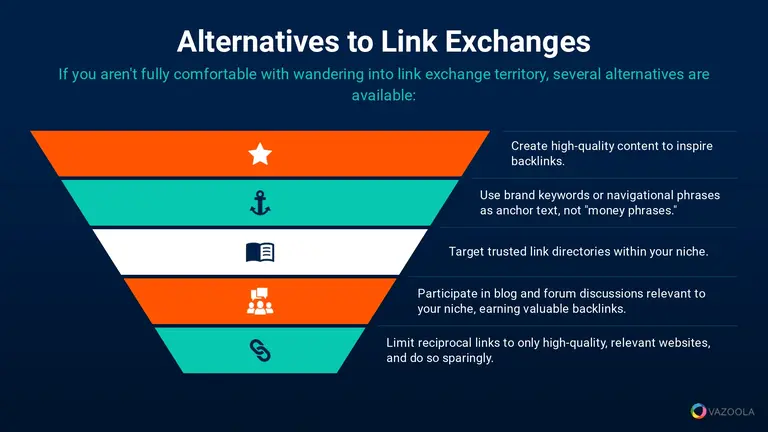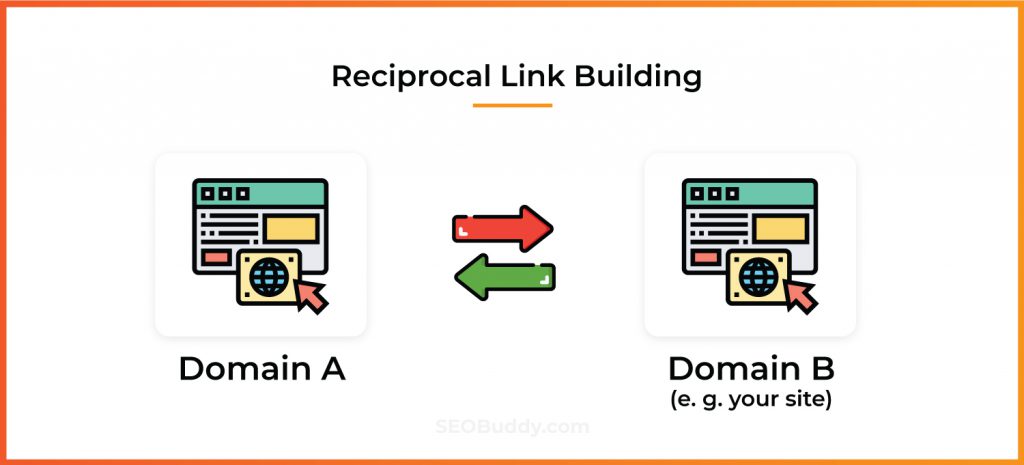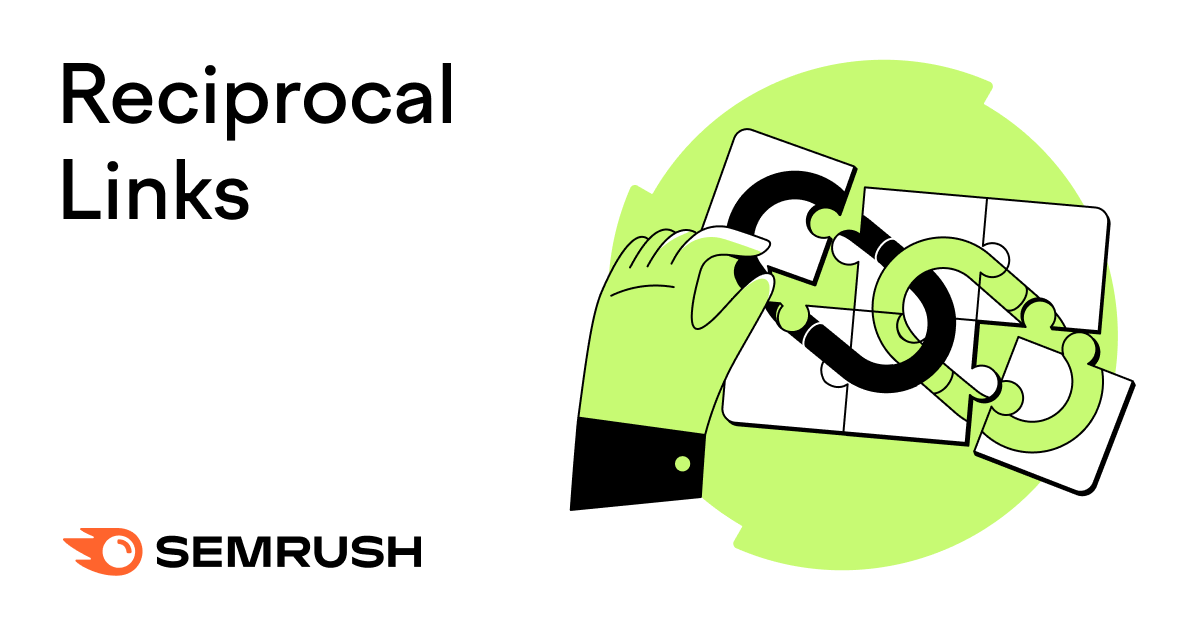Unlock the power of reciprocal links and boost your website’s SEO with this comprehensive guide on the secret to success.

Image courtesy of via DALL-E 3
Table of Contents
Introduction to Reciprocal Links
Today, we’re going to talk about something called reciprocal links. But what exactly does that mean? Let’s break it down into simple terms!
What is a Reciprocal Link?
Imagine you have a friend, and you both decide to share your favorite toys with each other. This is similar to how reciprocal links work. In the online world, websites can share links with each other. When two websites agree to share each other’s links, we call them reciprocal links. It’s like a friendly exchange of links between websites!
Why are Reciprocal Links Important?
Now, you might be wondering, why do websites bother exchanging links? Well, when websites share links, they can help each other by directing visitors back and forth. This means more people get to discover new websites, and both sites can benefit from increased traffic. It’s like helping each other out in the digital world!
How Reciprocal Links Work
Reciprocal links work like a friendly exchange between websites. It’s like two friends agreeing to tell others about each other’s cool treehouse. When websites exchange links, they are essentially recommending each other to their visitors.
Here’s how it typically works:
1. Website A reaches out to Website B, saying, “Hey, I like your space-themed content. How about we share links to help our visitors discover more awesome stuff?”
2. If Website B agrees, they will also add a link back to Website A on their own site. It’s a give-and-take kind of deal.
Benefits for Websites
When websites engage in reciprocal links, they both benefit in several ways. It’s like a win-win situation for them.
One major benefit is the shared traffic. Imagine you have a lemonade stand, and your friend has a cookie stand. By recommending each other, you can attract more customers to both stands!
Moreover, search engines like Google also see these links as a sign of credibility and popularity. So, websites that have more reciprocal links might show up higher in search results, attracting even more visitors.
Examples of Reciprocal Links
Imagine two friends, Sarah and Alex, who both have their own blogs. Sarah writes about her adventures in baking, while Alex writes about his travels around the world. They decide to help each other out by sharing links to each other’s blogs on their own websites. Sarah adds a link to Alex’s travel blog on her baking blog, and Alex adds a link to Sarah’s baking blog on his travel blog. This way, when visitors come to read about baking on Sarah’s blog, they can easily click over to Alex’s travel stories, and vice versa. This is how reciprocal links work – by allowing websites to give each other a little boost in visibility.

Image courtesy of via Google Images
Example 2: Business Websites
Let’s say there are two small businesses in the same neighborhood, a coffee shop and a bookstore. The coffee shop’s website lists upcoming events like book readings at the bookstore, while the bookstore’s website advertises the coffee shop’s special blends. By exchanging links, the coffee shop and the bookstore help each other attract more customers. When coffee lovers visit the shop’s website, they may discover an upcoming book reading at the bookstore and decide to attend. Similarly, book enthusiasts browsing the bookstore’s website might be enticed by the mention of specialty coffees at the nearby café. This mutual promotion through reciprocal links benefits both businesses and enhances their online presence.
Benefits of Using Reciprocal Links
Reciprocal links, also known as “traded links” or “link exchanges,” offer various advantages for websites that engage in this practice. Let’s explore some of the positive aspects of using reciprocal links:
Increased Website Traffic
One of the major benefits of reciprocal links is the potential to drive increased traffic to your website. When you exchange links with another site, their visitors may click on the link leading to your site, introducing a new audience to your content. This mutual sharing of traffic can result in more visitors exploring your website and engaging with your content.
Better Search Engine Ranking
Reciprocal links can also have a positive impact on your website’s search engine ranking. Search engines like Google consider the number of quality backlinks your site has when determining its position in search results. By exchanging links with reputable websites in your niche, you can improve your site’s credibility and authority, which may lead to higher rankings in search engine results pages (SERPs).
Drawbacks of Reciprocal Links
One drawback of using reciprocal links is the potential for websites to misuse them for spamming purposes. Some websites may engage in unethical practices by creating excessive links solely for the purpose of manipulating search engine rankings. This can lead to a poor user experience and negatively impact the credibility of the linked websites.

Image courtesy of via Google Images
Lower-Quality Links
Another downside of reciprocal links is the presence of lower-quality links that may not add value to a website. Not all reciprocal links are created equal, and some links from irrelevant or low-authority websites can actually harm the search engine ranking of a site. It’s essential to carefully vet potential link partners to ensure that the links exchanged are from reputable and relevant sources.
How to Find Quality Reciprocal Link Partners
When it comes to reciprocal links, finding the right partners to exchange links with is crucial for the success of your website. Here are some tips on how to identify quality websites for reciprocal link exchanges:
Researching Reputable Sites
One of the first steps in finding quality reciprocal link partners is to research and identify reputable websites within your niche. Look for websites that have good content, a strong online presence, and a decent amount of traffic. You can use tools like Google search, Alexa rankings, or industry-specific directories to find potential partners.
Avoiding Bad Partners
While searching for link exchange partners, it’s essential to steer clear of untrustworthy or low-quality websites. Look out for websites that engage in shady practices like buying links, excessive link swapping, or having spammy content. These websites can harm your own site’s reputation and credibility. Trust your instincts and choose partners that align with your website’s values and standards.
Steps to Create Reciprocal Links
Creating reciprocal links involves a simple process of engaging with other websites to exchange links for mutual benefit. Let’s walk through the steps to create reciprocal links seamlessly.

Image courtesy of via Google Images
Step 1: Contact Potential Website
The first step in creating reciprocal links is to reach out to other websites that you believe would be a good fit for a link exchange. Make sure to contact them through their contact page or email with a polite and professional request for a link exchange.
Step 2: Agree on Terms
Once you have established contact with the website owner or webmaster, it’s essential to discuss and agree on the terms of the link exchange. This includes determining where the links will be placed on each other’s websites and how they will be displayed.
Step 3: Implement the Links
After both parties have agreed on the terms, it’s time to implement the reciprocal links on each website. Make sure to add the links in a visible and appropriate location on your website to ensure that visitors can easily navigate to the linked site.
Summarizing Reciprocal Links
Reciprocal links are like a virtual handshake between websites. It’s when one site links to another, and that other site links back. This exchange helps websites show mutual support and can lead to increased traffic and visibility.
What is a Reciprocal Link?
A reciprocal link is a connection between two websites where they agree to link to each other. It’s like saying, “I’ll show your website to my visitors if you show mine to yours.” This way, both sites benefit from sharing their visitors.
Why are Reciprocal Links Important?
Reciprocal links are important because they help websites grow together. By exchanging links, websites can reach new audiences and improve their search engine rankings. It’s like teamwork in the online world!
Overall, reciprocal links are a way for websites to support each other and grow together on the internet. It’s about sharing the spotlight and helping each other succeed.
Frequently Asked Questions (FAQs)
Are Reciprocal Links Safe for SEO?
Yes, reciprocal links can be safe for search engine optimization (SEO) when used appropriately. When websites exchange links with relevant, high-quality sites in a natural and organic way, it can benefit both parties by increasing visibility and traffic. However, excessive or low-quality link exchanges solely for the purpose of manipulating search rankings can be harmful. It’s essential to focus on creating valuable connections with websites that align with your content and audience.
Do All Websites Use Reciprocal Links?
Not all websites use reciprocal links. While they can be a useful strategy to enhance visibility and build relationships with other sites, some websites may choose to focus on other SEO tactics or may prioritize different marketing strategies. The decision to engage in reciprocal linking depends on the goals and preferences of each website owner.
Can Reciprocal Links Hurt My Website?
In some cases, reciprocal links can potentially harm a website’s SEO efforts. If the links are from low-quality or irrelevant sites, or if the linking is done in a manipulative way solely for the purpose of improving search rankings, it can have a negative impact. Search engines like Google value natural, high-quality link building that adds value to users. Therefore, it’s crucial to be selective in forming reciprocal link partnerships and focus on quality over quantity to avoid any adverse effects on your website.







